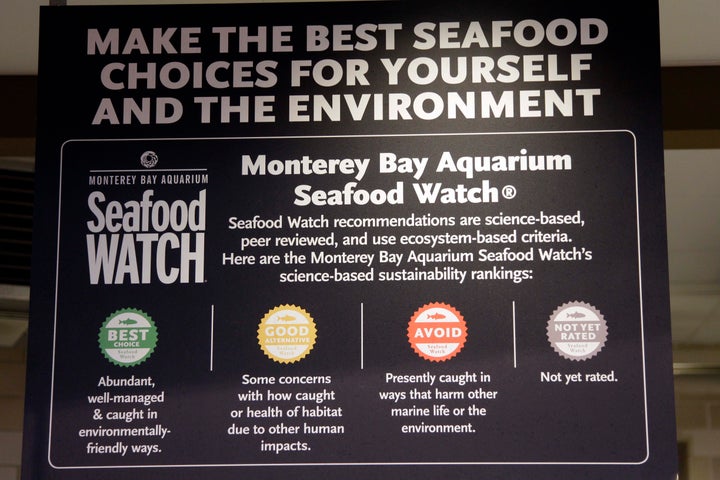
A couple of years ago, Whole Foods Market invited my not-for-profit outfit, Blue Ocean Institute, to help them inform their customers' selections of wild-caught seafood. Whole Foods wanted to display our seafood rankings in their stores, to show customers which seafood we'd rated green (abundant and sustainably fished), yellow (some problems), and red (major problems: depleted, and or entailing high incidental kill of other species, and/or caught with habitat-damaging methods). In some regions, Monterey Bay Aquarium also works with Whole Foods.
I thought it was pretty great that Whole Foods had opened that dialogue and, frankly, invited some criticism by being so open; a common question I got was, "Why would you work with them if they're still going to sell "red"-rated fish?" Well, here's why --
Starting on Earth Day (April 22), Whole Foods won't be selling any more red-rated seafood. They'll be the first (and so far only, but we hope that will change) national grocer to do so. Their original target date was one year from now. But they're so committed, they got there a year early. That's why.
We could have said no. We could have said, "We'll work with you after you get the red out." But the perfect is the enemy of the good. By working together, but us sensing Whole Foods' commitment and supporting but not rushing them, and by putting the information out there and letting customers take it all in at their own pace, I think we started at good and are now seeing a change that brings a major national grocery trendsetter closer to perfection. And it was all their idea.
Whole Foods Market's seafood guru Carrie Brownstein has for years worked on this, and we've enjoyed a smooth, efficient working relationship. (Blue Ocean's liaison is Dr. Alan Duckworth: aduckworth@blueocean.org) But much more important than what they've done with us, Brownstein and other Whole Foods staff have worked closely with their seafood producers to move some of them closer to sustainable methods. Those who've improved enough to make the cut get to stay in the fold. That's progress.
Whole Foods also offers various seafood certified sustainable by the Marine Stewardship Council (founded in the late '90s via partnership of World Wildlife Fund and Unilever; so beware of industry-spawned imitators), such as Alaska salmon, Pacific halibut, Pacific cod, and Nova Scotia harpoon-caught swordfish. (Fourteen years after the "Give Swordfish A Break!" campaign, those swordfish are recovering. This fall on an upcoming episode of Saving the Ocean -- a new series that I host on PBS television -- we'll be showing how harpoon-wielding Nova Scotian fishermen travel more than 100 miles from land to find and catch swordfish.)
If you want to make change, "Show me how" can be a stronger, more effective approach than "Just say no." That's what I think. Kudos to Whole Foods Market for showing how it's done.
